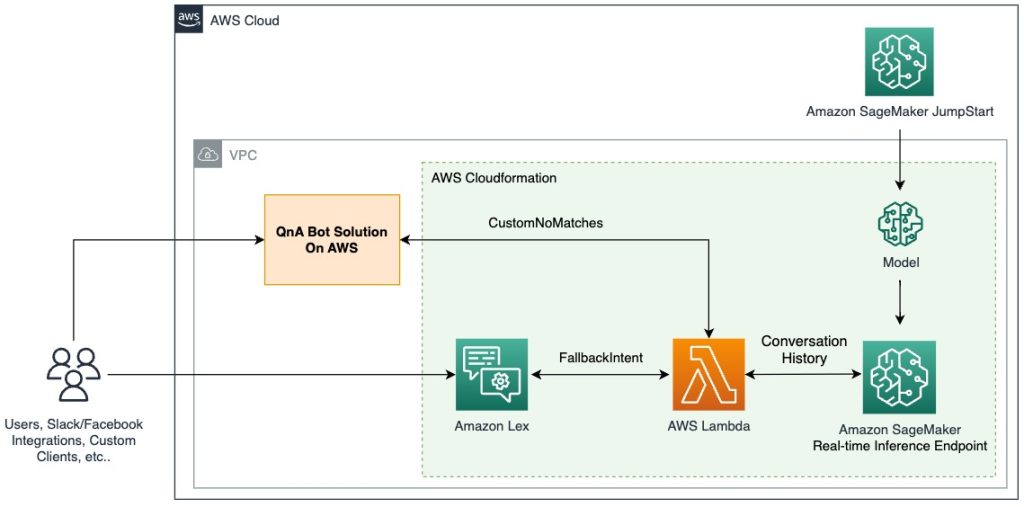Introduction to AWS Well-Architected Framework: The AWS Well-Architected Framework provides best practices to help architects build secure, high-performing, resilient, and efficient infrastructure for their applications in the cloud.
Understanding the AWS Well-Architected Framework: The AWS Well-Architected Framework provides a structured approach to architecting and optimizing workloads on AWS across five pillars: Operational Excellence, Security, Reliability, Performance Efficiency, and Cost Optimization. Here, we delve into the best practices specifically tailored for optimizing costs.
The Well-Architected Framework consists of six key pillars: Operational Excellence, Security, Reliability, Performance Efficiency, Cost Optimization, Well-Architected Review
1.Operational Excellence:
Operational Excellence focuses on improving processes and procedures to deliver business value efficiently and effectively. Implementing automation and monitoring allows teams to quickly identify and resolve issues, reducing manual effort and improving overall operational efficiency.
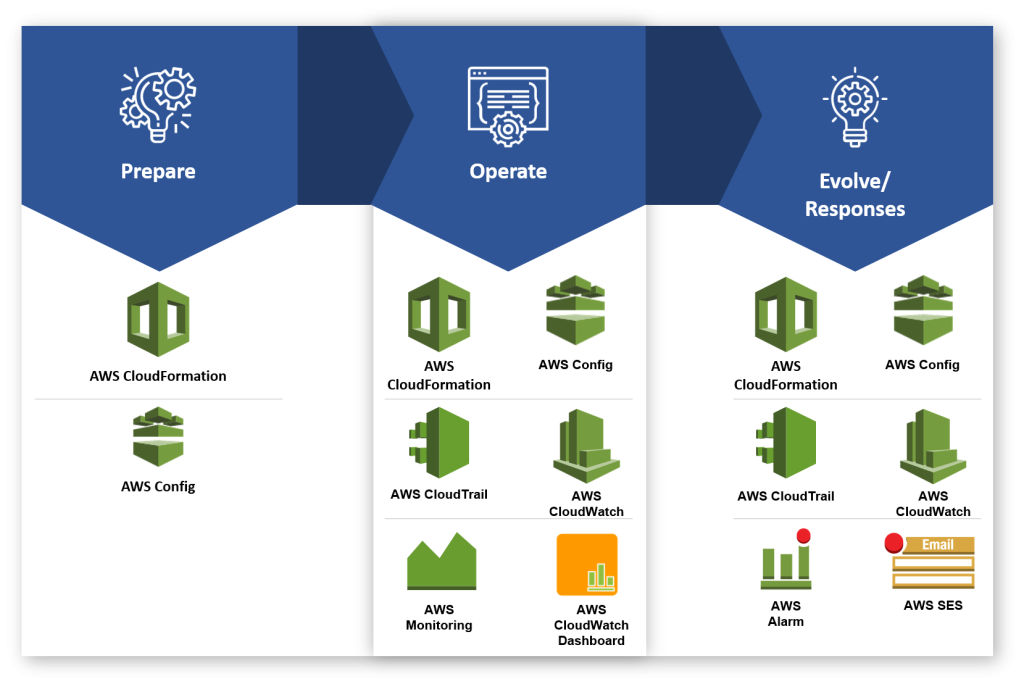
- Automate Workloads: Implement automation for deployments and operations using AWS services like AWS CloudFormation and AWS OpsWorks.
- Analyze Operations: Use AWS CloudWatch for monitoring and AWS X-Ray for tracing to gain insights into application health and performance.
- Continuous Improvement: Utilize AWS Lambda for serverless computing and AWS CodePipeline for continuous integration and delivery (CI/CD).
AWS Services:
- AWS CloudFormation
- AWS OpsWorks
- AWS CloudWatch
- AWS X-Ray
- AWS Lambda
- AWS CodePipeline
2.Security:
Security in AWS involves implementing comprehensive security measures to protect data, systems, and assets. By leveraging AWS security services and best practices, organizations can maintain a secure environment and meet compliance requirements effectively.
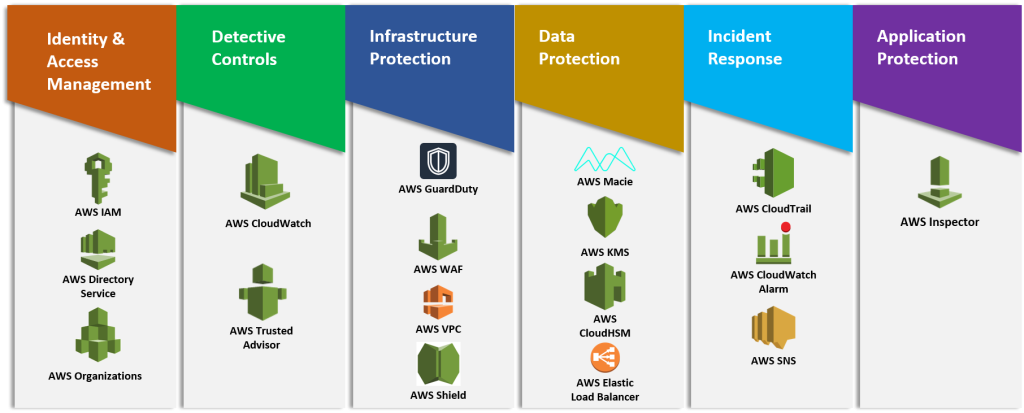
- Implement Strong Access Controls: Use AWS IAM to manage access to AWS services and resources securely.
- Encrypt Data: Utilize AWS Key Management Service (KMS) for encryption of data at rest and in transit.
- Regular Audits: Conduct regular security audits using AWS Inspector and AWS Security Hub to identify and remediate vulnerabilities.
AWS Services:
- AWS IAM
- AWS KMS
- AWS Inspector
- AWS Security Hub
3.Reliability:
Reliability ensures that systems operate consistently and recover quickly from failures. AWS provides services and features that enable architects to design resilient architectures, ensuring high availability and minimal downtime for applications.
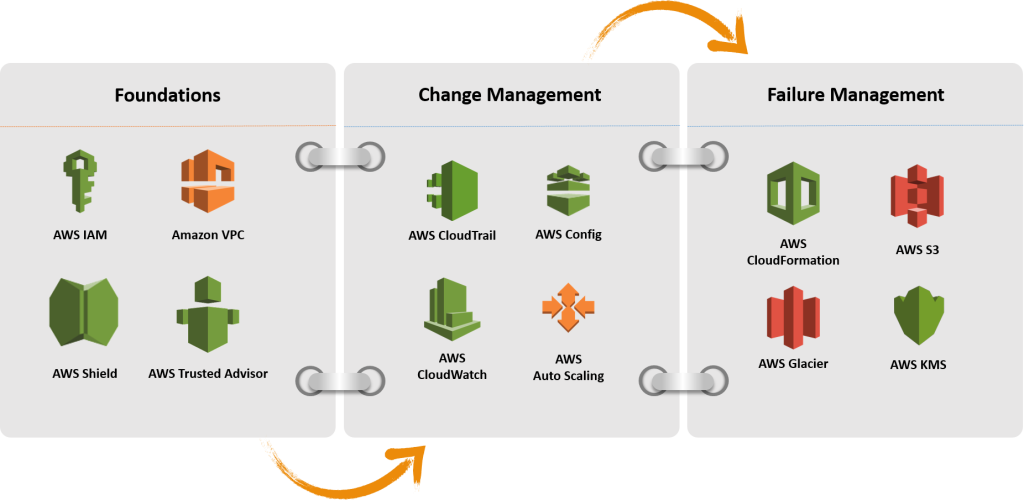
- Design for Fault Tolerance: Architect applications across multiple Availability Zones (AZs) using AWS Elastic Load Balancing and Auto Scaling.
- Automated Backups: Implement automated backup and recovery strategies with AWS services like Amazon RDS and Amazon EBS.
- Monitoring and Alarming: Use AWS CloudWatch for monitoring and AWS CloudTrail for logging to ensure system reliability and performance.
AWS Services:
- AWS Elastic Load Balancing
- AWS Auto Scaling
- Amazon RDS
- Amazon EBS
- AWS CloudWatch
- AWS CloudTrail
4.Performance Efficiency:
Performance Efficiency focuses on optimizing resource utilization to meet application performance requirements cost-effectively. By monitoring and optimizing performance metrics, organizations can ensure efficient use of resources and improve overall application performance.
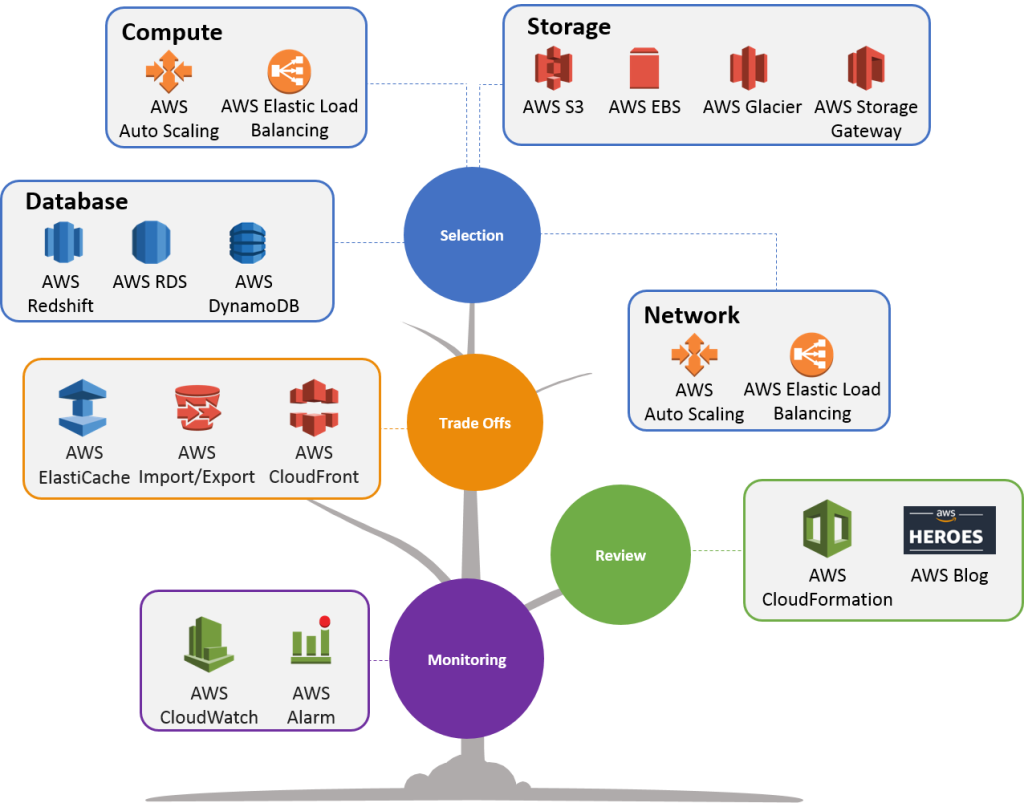
- Rightsize Resources: Select appropriate instance types and sizes based on workload requirements using AWS EC2 and AWS RDS.
- Monitor Performance: Utilize AWS CloudWatch to monitor performance metrics and AWS Trusted Advisor for recommendations on optimizing resource utilization.
- Implement Caching: Use Amazon ElastiCache for caching frequently accessed data to improve application performance.
AWS Services:
- Amazon EC2
- Amazon RDS
- Amazon ElastiCache
- AWS CloudWatch
- AWS Trusted Advisor
5.Cost Optimization:
Cost Optimization aims to minimize costs while maximizing efficiency and performance. By adopting cost-effective architectures and leveraging AWS cost management tools and pricing models, organizations can optimize their AWS spending and achieve significant cost savings.
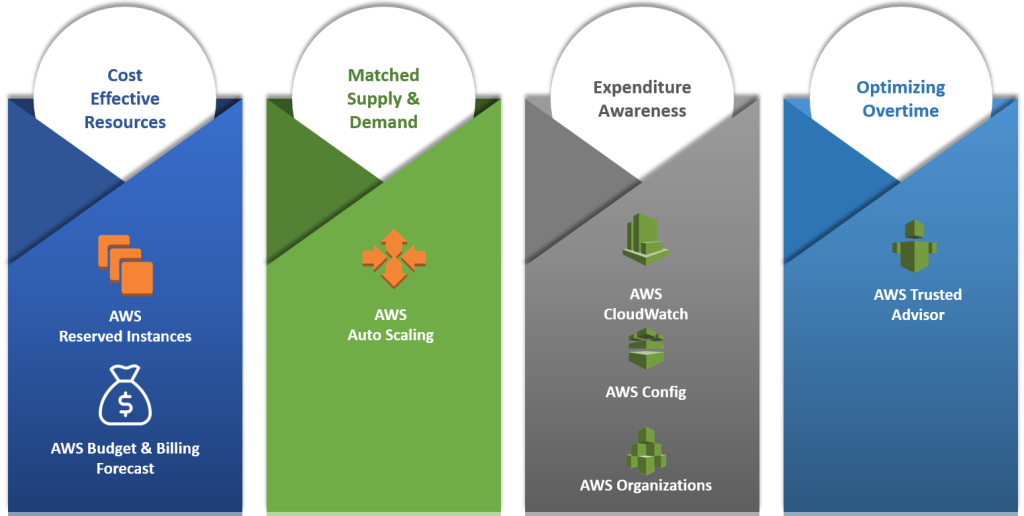
- Utilize Cost Explorer: Analyze usage patterns and costs using AWS Cost Explorer to identify cost-saving opportunities.
- Reserved Instances: Leverage AWS Reserved Instances for predictable workloads to reduce costs.
- Spot Instances: Use AWS Spot Instances for non-critical workloads to take advantage of cost savings.
AWS Services
- AWS Cost Explorer
- AWS Budgets
- AWS Savings Plans
- AWS Spot Instances
6.Well-Architected Review Process:
The Well-Architected Review process ensures that architectures are aligned with best practices across the six pillars. By conducting regular assessments and taking actionable steps, organizations can continuously improve their cloud environments for better performance, security, reliability, and cost-efficiency.
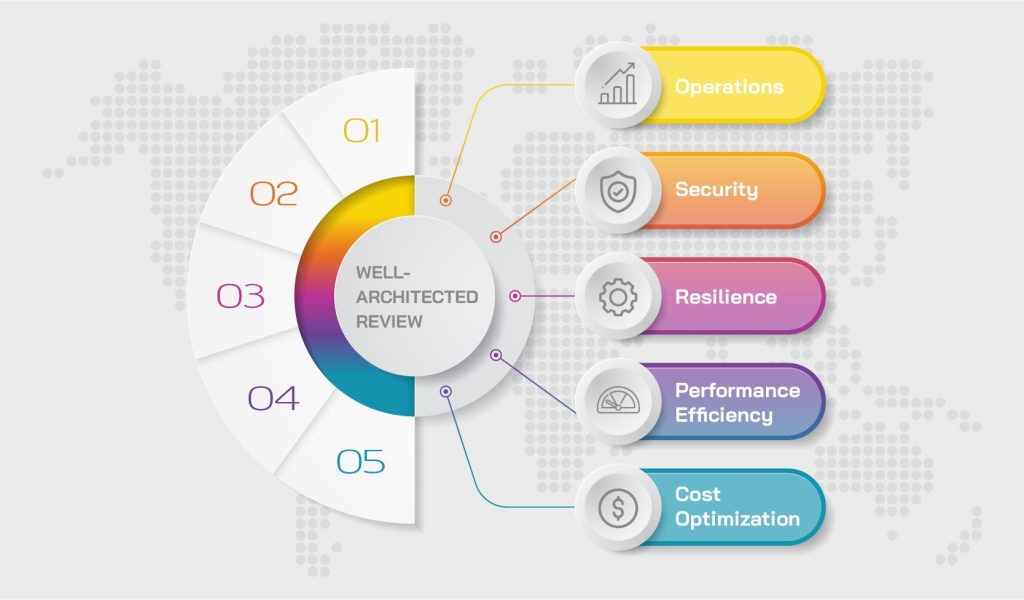
- Regular Assessments: Conduct regular Well-Architected Reviews to evaluate architectures against best practices.
- Actionable Insights: Prioritize actions based on identified risks and opportunities for improvement.
- Continuous Optimization: Implement changes to optimize architectures over time based on review outcomes.
Conclusion
Mastering AWS cost optimization with the Well-Architected Framework requires a holistic approach that integrates best practices across operational excellence, security, reliability, performance efficiency, cost optimization, and regular review processes. By implementing these pillars effectively, organizations can achieve optimal cloud architectures that support their business goals and maximize return on investment in AWS.
- By admin

